Background and need of study
The time is going through the era of the Information Technology that changed the regular lives of humankind as well as business by the way of free flow of information and communication and provided the opportunity of e-commerce for the business communities where social media is a powerful tool for brand promotion.
Odhiambo (2012) pointed out that social media is more effective than the other traditional advertising media, but it would not put into practice as an isolated scheme devoid of enhanced alignment with traditional advertising media; the repercussion of the social media would not able to generate brand awareness as well as business development without integration with the existing media.
The social medias are the new experience to connect people from all over the world through online presence, it turned into a charismatic feature of the marketing mix by modernising the technique of the companies to interact with their customers, rather than traditional media of advertising the companies are significantly turning to the social media.
Under the concurrent recessionary economy almost every business look for cost effective solution for their brand promotion and marketing mix, social media is the approach that facilitated the business communities to promote brand loyalty, thus it is emergence to conduct a research to investigate the social media and its application for brand promotion.
Aims and objectives
In the modern corporate world, integration of social media has turned as the most significant feature of marketing mix in order to transform the technique companies adopt to connect with customers, which is a new area of research where the literature of brand promotion striving to adjust in a most scientific method.
The traditional marketing literature required to having enough scientific evidence and data to attain a perfect fit with the social media that is still in scarcity, on the other hand the existing research with lack of sufficient industry data hinders the emergence of recognising the social media as a right alternative to the mainstream advertising media.
Thus, the objective of this study is to present social media and its greater significance for brand promotion supported by enough literature along with most favourable industry data found from the real life practice of different companies presented in the case study.
Moreover, the social capital mostly consigns the resources gathering by the way of utilising relationships among the individuals where social media contributes a platform to build strong association through the network of large members of that media in order to ensure right use of social capital.
At the same time, the wider application of the Internet has provided ‘vaunted ubiquitous connectivity’ to connect each other whether it expected or unexpected by the user, the unexpected information are identified as sperm that negatively influence the people where social media could generate a stopple for sperms (Wellman, Haase and Hampton 2002).
In this context, the aim of this study is to identify the contribution of social media how brand promotion could fit its customers to overcome the hindrance of sperm assigning ‘like’ or ‘follow’ in the social media pages.
Hassan and Bashir (2012) mentioned that largest social media Facebook has 500 million of active users with 100 billion clicks per day, while other social media platforms have almost bulky user’s data that provide large engagement of people, the business always put its attention where people gather, so it’s right place for marketers to keep marketing efforts and brand promotion.
The recent economic downturn and its consequential recessionary economy has generated continuous pressure on the corporate world to adopt cost cutting strategy in order to sustain with crisis, thus, another vital objective of this study is to examine how social media could assist to reduce investment for brand promotion.
Brown (2010) added that to reduce business risk of the traditional media, most of the companies are designing social media strategies pointing to the growing sales, the shifting attributes of customers illustrate that they are changing their TV channel while the corporate advertisement starts, it occurs due to lack of understanding the diverse customers attitude.
In case of social media, there are huge applicable tools to address each individual customer’s liking choice and queries, this study also aimed to provide a well understanding with the associated tools of social media those have great contribution to generate a communication and marketing strategy by the way of brand promotion.
Defining social media
The history social media can be traced back from 1980, such as first dial-up BBC stared to develop from the very beginning of its operation (Hershey 2010, p.5; and Morrison & Foerster 2011, p.1; Toolkit 2011, Tredinnick 2008; and Evans & McKee 2011).
In 1991, World Wide Web introduced to provide communication facilities to the US army, government and universities; however, the government of the USA introduced it for the citizen in 1995 (Hershey 2010, p.5; and Morrison & Foerster 2011, p.1; Toolkit 2011, and Tredinnick 2008).
The major development can be observed from 2002, such as, two large social networking sites LinkedIn and MySpace started operation in 2003 to met the demand of the users, accept recommendations, and promote communication system (Hershey 2010, p.5; and Morrison & Foerster 2011; Toolkit 2011, Tredinnick 2008; and Evans & McKee 2011). However, the following figure gives a brief history of online advertising –
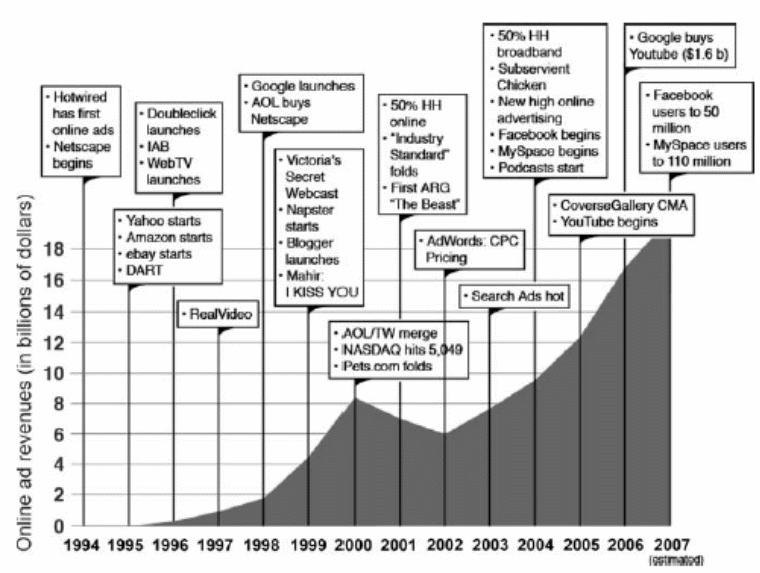
Social media are media for social interaction (Toolkit 2011, Tredinnick 2008, Brussee & Hekman 2010; and Dimitroff 2006). According to statement of Brussee & Hekman (2010, p.1), it is the most accessible media. It uses scalable publishing techniques along with web-based technologies in order to turn communication into interactive dialogues (Toolkit 2011, p.3; Myhill, Shoebridge, & Snoo 2009); in addition, it has already attracted researchers and press attention though it involves some confusing matters (Brussee & Hekman 2010, p.1).
On the other hand, Miller & Lammas (2010) stated that it offers potentially seductive scopes for new forms of communication, which replaces traditional media. Miller & Lammas (2010) argued that the fourth revolution for the users to communicate with others and send messages to the people; however, Toolkit (2011, p.2) stated that it is a group of Internet-based applications, which develops the ideological and technological bases of Web 2.0.
At the same time, Toolkit (2011, p.2) further addressed that it permits the formation and exchange of user-generated content; in addition, the users can produce, publish, manage, critique, evaluate, and interact with online content (Tuten 2008; Brussee & Hekman 2010; Oztaysi, Sezgin, & Ozok 2011; and Miller & Lammas 2010).
Moreover, Brussee & Hekman (2010, p.1) stated that social media should define from the socio-economic point of view; thus, Toolkit (2011, p.2) argued that the multinational companies, non-profit organizations, and SMEs consider this media as consumer-generated media while these companies use it to attract consumers.
At the same time, the main characteristics of social media indicate that it is a combination of technology and social interaction for the co-creation of value (Toolkit 2011, p.2; Brussee & Hekman 2010, p.1; Berndt, Herbst, & Roux 2005 and Miller & Lammas 2010).
The largest and most popular social network service and website “Facebook” started its journey in 2004 and it introduced by Mark Zuckerberg with his friends (Toolkit 2011, p.2); however, it has over one billion active users and they can create personal profile, build common interest user groups, and share information using the advantage of modern technology (Oztaysi, Sezgin, & Ozok 2011; and Tuten 2008).
However, this social networking site generated a significant part of revenues from banner advertising though it has many other sources to earn money, such as, visitors of Google and Microsoft click on the advertisement (Toolkit 2011, p.38; Brussee & Hekman 2010).
Status-based social networking site “Twitter” introduced in 2006 to interact with individuals; in addition, it is one of the most popular site at present since the celebrities use it to correspond with fans and traditional media to give update about them (Toolkit 2011, Tredinnick 2008; and Evans & McKee 2011).
Defining Brand Promotion
Brand promotion is a common marketing strategy (Keller 2009; Chi, Yeh & Yang 2009; and Casalo, Flavian & Guinaliu 2008). However, it is one of the most effective marketing tools to develop brand awareness and customer loyalty (Casalo, Flavian & Guinaliu 2008; Lakhotia 2013 and Engel, Blackwell & Kollat 1995).
At the same time, Lakhotia (2013) stated that it is a strategy to enlarge competitiveness and overall company value; therefore, Casalo, Flavian & Guinaliu (2008) and Tuten (2008) stated that companies need to use this strategy to reach members of their target audiences to give information, update, convince and influence the customers to purchase their products.
In addition, the companies use this strategic tool for different purposes, such as, increase sales volume, retain customers and keep image alive to the customers (Deighton, Henderson & Neslin 1994; Lakhotia 2013; Engel, Blackwell & Kollat 1995 and Keller 2009).
However, the main objective of this marketing mix is to provide the relevant information regarding products, services, philosophies, features and prices of the brand to differentiate the brand (Keller 2009; Chi, Yeh & Yang 2009; Casalo, Flavian & Guinaliu 2008 and Deighton, Henderson & Neslin 1994).
At the same time, the companies can create market demand to boost revenues and market share (Lakhotia 2013; and Tuten 2008); it helps the companies to building brand equity or brand image to stabilize sales (Casalo, Flavian & Guinaliu 2008; and Keller 2009).
How to make brand promotion in social media
Advertising (Time, People, and Management)
According to Shinder (2010), there are several ways by which brands can be promoted in social media; for example, social-networks like Facebook, Twitter, Google+, LinkedIn, Orkut and Foursquare provide impressive services for communicating effectively with the society, and this makes this media extremely attractive to the businesses for attracting mass people online.
A number of businesses exist throughout the global corporate networks that generate corporate relations with contemporaries and latent customers; for example, LinkedIn particularly focuses on such groups; on the other hand, several companies are taking this forward by utilizing networking-sites for aggressively promoting their respective companies; such brand promotions are extremely attractive for writers, trainers, and consultants.
Companies utilize networks for raising their brand image over the internet and for improving their status; this can be done not only by creating-account, but also by posting appealing and lively contents repeatedly, updating the pages frequently for getting utmost disclosure, arranging privacy-settings accordingly, dividing the trade and personal-online-lives, utilizing aggregator-apps for efficient control of social-networks decorating pages with multimedia.
Social media advertising process/planning/Execution and Evaluation (on brand promotion)
Lee & Kotler (2012, p.2) stated the process for social media advertising to promote brand; the following four figures give more information related with the process/ planning –


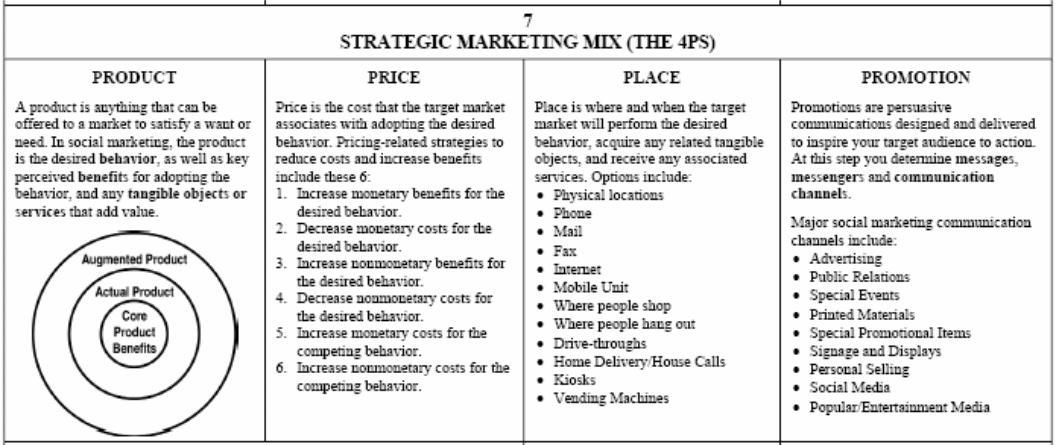

Social Media Advantage on Making Brand Promotion
Evans & McKee (2011), Tuten (2008) and Sandilands (2013) stated that the marketers use this strategy considering the fact that it is cost effective to promote brand while most of the social networking sites are free for the users all over the world.
Traditional advertising systems, for example, TV, radio, banner advertisements, print placements, etc. were the popular media to the multinational companies, non-profit organization and individuals; however, social media or Web 2.0 opened new door to the people sign up cost is free to join popular sites like Facebook, Twitter, MySpace; therefore, this approach is affordable to promote brands (Brookins 2013).
At the same time, many small companies gain competitive advantage using social media for brand promotion though it has many risks and disadvantages (Tuten 2008; Casalo, Flavian & Guinaliu 2008 and Sandilands 2013). However, the companies have opportunities to access, create a profile and post content with no cash investment to reach target audience (Evans & McKee 2011, Tuten 2008; Casalo, Flavian & Guinaliu 2008 and Sandilands 2013).
On the other hand, the visitors or users of the sites stay for a long time in the social networking sites though more than 69% of the members have faith on the content of the advertise (Evans & McKee 2011, Tuten 2008 and Sandilands 2013). In addition, Sandilands (2013) and Brookins (2013) stated that it is discretion of the users to get information from the web content.
Most importantly, the companies and non-profit organizations can target large audience while Facebook has about 750 million members, LinkedIn has at least 120 million members and YouTube has near 3 billion videos to view everyday (Brookins 2013; Evans & McKee 2011; Tuten 2008; Casalo, Flavian & Guinaliu 2008 and Sandilands 2013).
However, advertisers need not to wait for a long time as it gives the opportunity to publish content instantly for which they can share information and arrange special events easily (Sandilands 2013; Evans & McKee 2011, Tuten 2008; and Casalo, Flavian & Guinaliu 2008)
According to the survey report of Stelzner (2011) and Sandilands (2013), the main advantages of such marketing tools are increasing exposure and escalating traffic, for instance, more than 85% of all marketers stated that it will increase exposure while about 69% respondents considered second option; however, the following figure gives more information related with key benefits of social media –
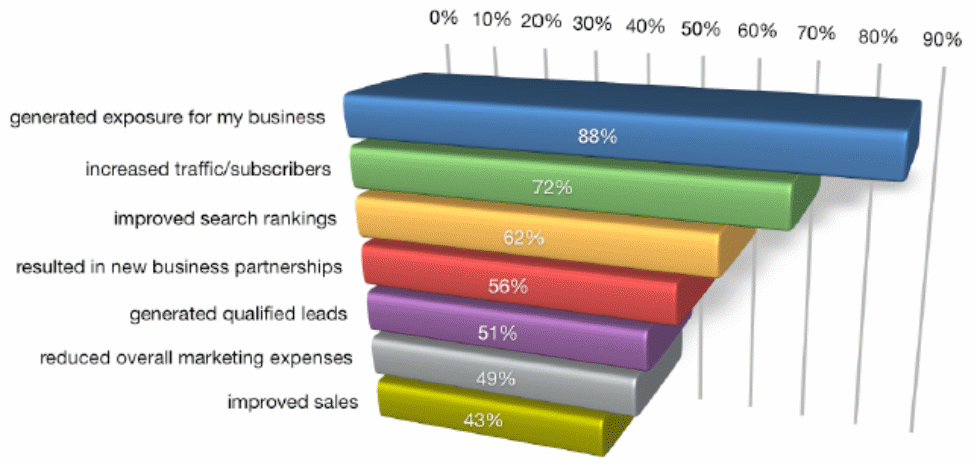
Stelzner (2011) noted that almost two-thirds of marketers use social media to gain marketplace intelligence and more than half of the marketers argued that social media need to develop ongoing relationships with fans and followers.
Measurement on Social Media Effectiveness to the Brand Promotion: (when. Why, what, how)
Baran, Zerres & Zerres (2009, p.390) and Pradiptarini (2011) have conducted research on this issue to identify the measurement system while more and more companies are using social media to promote their products as it is an effective system to communicate with customers and to build loyal customer base.
According to the survey report of Matmon (2012), there are many factors for which it becomes difficult to measure the effectiveness of the social media to the brand promotion, for instance, no available tool to measure actual return on investment
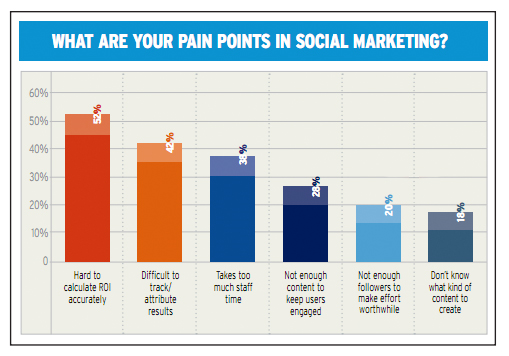
Management Consideration of Social Media
However, the management teams of the companies need to consider following issues to use social media for brand promotion, such as –
- The marketers have to take into account the risk factors related with advertising as it can create number of problems to create brand image (Miller & Lammas 2010; Oztaysi, Sezgin, & Ozok 2011; Toolkit 2011, Tredinnick 2008; and Evans & McKee 2011);
- However, short-term profit can be measure, but the management teams need to focus on long-term revenue generation issues (Miller & Lammas 2010; and Oztaysi, Sezgin, & Ozok 2011);
- If the management team of the companies fail to provide feedback to the customers due to lack of experience or ability, then firms can be adversely affected, for example, renowned pharmaceutical company Johnson & Johnson has uploaded a video as part of its integrated marketing campaign. The aim of this video was to relief pain for females who carry their kids in a sling; however, the users provided a lot of negative feedback within an hour as it perceived denigration of motherhood for which the customers had stopped to purchase their products (Miller & Lammas 2010; and Evans & McKee 2011);
- As a result, the management teams need to consider the value and customer behaviour before starting campaign; otherwise, a well-organized advertising campaign may also create serious hindrance for the companies;
- At the same time, social media marketing assists to maintain long relation with consumers, but it also very common scenario that customers rely on the message of the companies, but will react badly to sales-push messages, which infringe social media’s basic qualities of socialisation along with trust (Miller & Lammas 2010; and Evans & McKee 2011);
- In addition, the marketers should consider risk factors, such as, customers can lose their interest on the companies due to poor content or execution can bring negative results and misuse of social networking sites can irritate consumers, for example, fake blog “Walmarting across America” has criticised for unethical activities (Miller & Lammas 2010; and Evans & McKee 2011);
- The size of online communities is one of the most considerable issues to the marketers;
Social Media Cases
Airline Industry
From 1998, Airline industry used social media strategy and Web 2.0 to expand the business whereas this media became popular to the other industry from 2009; however, JetBlue has more than 150 thousands follower on Twitter, Lufthansa permits customers to update their Twitter or Facebook statuses, AirAsia drives buzz about its new destinations; however, the following figures more information in this regard –
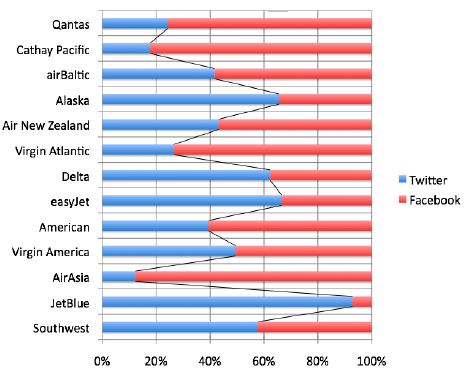
Table 2: Cases of different Airways. Source: Self generated from Nigam (2012).
Johnson & Johnson:
Table 2: Case of Johnson & Johnson. Source: Self generated from Nigam (2012).
There are many ways by which social networking sites can improve the position of the business, for instance –
- J&J seemed that multimedia marketing strategy can create close relationship between customers within a group and the companies; thus, it will facilitate J&J to provide information about child care; however, the following figure gives information about CRM process –
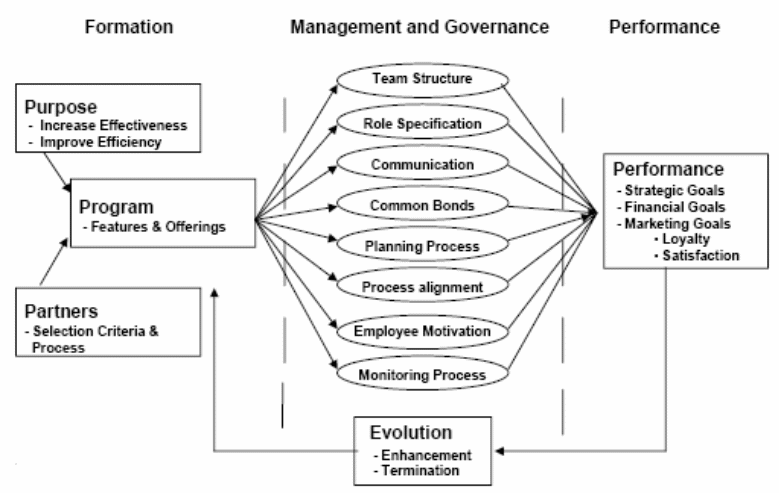
Analysis of Social Media Effectiveness
There are many articles on social media, but the effectiveness of this media is an unanswerable prediction while the marketers of the companies have both short-term and long-term goals (Miller & Lammas 2010; Chi, Yeh & Yang 2009; Casalo, Flavian & Guinaliu 2008; and Evans & McKee 2011).
On the other hand, execution and measurement of the campaign is relatively difficult issue for which the management teams main focus on the short-term objectives (Miller & Lammas 2010; Evans & McKee 2011; and Chi, Yeh & Yang 2009).
There are many previous researches where the effectiveness had measured using volume metrics, such as, traffic, hit rates, time spent on-line, and so on; however, these techniques are not useful to measure return on investment (Miller & Lammas 2010; Hershey 2010; Toolkit 2011; and Tredinnick 2008).
At the same time, the marketers are now focusing on the qualitative metrics, such as, unique number of visitors, communication rates, appropriate actions taken, conversation size, writer trustworthiness, customer profiles, and many other factors (Miller & Lammas 2010; Hershey 2010; Toolkit 2011; Keller 2009 and Myhill, Shoebridge, & Snoo 2009). However, the following figure shows the ways by which different social networking site number of visitors –
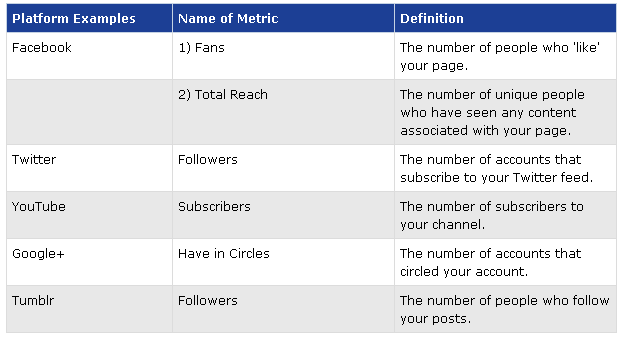
At the same time, all visitors will not be potential customers for which it is important for the companies to know the number of people preferred to read content and provide feedback, such as, Twitter re-tweets, Facebook gives the opportunity wall posts or shares (Herman 2013 and Evans & McKee 2011). In addition, engagement can be direct or indirect; however, the next figure demonstrates the ways by which different social networking site can measure engagement –
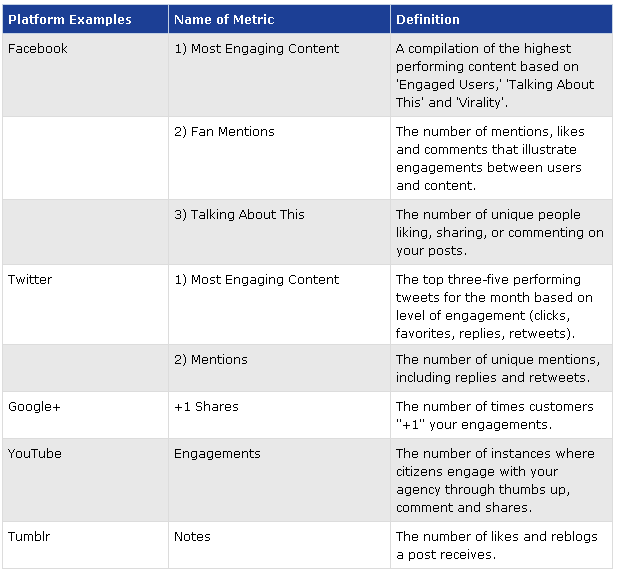
There are few other ways, such as, customer experience or sentiment; however, these qualitative indicators can not be quantifying (Herman 2013). However, the customers share their views regarding the campaigns or advertisement –
Table 4: – Metric to know about customer experience. Source: Herman (2013).

Two Case Studies
Case study 1: – P&G
KPMG (2011) pointed out that P&G is a globally renowned company that deals with consumer product and spending about US$ 9 billion per year for advertising, on in 2009, the company spent US$ 8.5 billion for its brand promotion through the traditional media and was not engaged with social media up to 2010.
Following the distressed impact of the global financial crisis, it was under pressure to adopt cost-cutting policy and in 2010, it realised that a charismatic attendance in the Facebook with leas investment than the traditional medias could assist to enhance marketing opportunity for its products and to promote brand loyalty, thus, the company strongly engaged with social media marketing.
At the same time, P&G identified that the majority of its target audience spent a long time in the Internet and social media, it would be a great opportunity to connect with them with less efforts and financial engagement, this is the spirit that leads P&G to focus to the online platforms that would strengthen its brand loyalty.
Moreover, P&G also learnt that social media portals are not just a website to connect individual’s personal and emotional engagement with community linkage, but the increasing popularity of the social media has turned them into mass media pointing its changing attributes to engage customers in a more effectual way than the traditional media.
Procter & Gamble (2012) pointed out that the company has taken into account of increasing presence of its employees and partners in the Internet, they have considered social media as part of regular life, to utilise effectiveness of this medium, P&G needed to know local legislations in different countries regarding the social media in order to introduce an effective policy.
Complying with the local legislation, the social media policy of P&G would represent regarding the company, its product, and services, and would promote its brand observing with other interactive medias, the policy would integrate the principles of its application, values and performance measures for employees, partners and stakeholders for internal and external coordination.
The core values of the social media policy of P&G is to adopt good judgment for feasibility study comparing with applicable law where it operates and make available for both the external and internal use through sincere and open communication in order to safeguard its content those would be posted by the customers and amateur users at the company’s.
KPMG (2011) also added that as per statistics of 2010 the figure of the individuals from different part of who visit the commercials in the different social medias are about 1.8 billion, the number of visitors without any border barrier who download commercial videos from YouTube were 140 million in that year.
In the next year, the number of commercial visitors only in the Facebook was 1.3 million while the sales of ‘Old Spice’ within a year jumped to the double digit as an outcome of social media use, such data inspired P&G for strong integration.
The integration social media at P&G delivered significant progress for the company’s brand promotion as well as its product and service, it posted a series of commercials at social networking sites like Facebook, Twitter, and YouTube and promoted their contents and ads shows, and P&G was very clearly able to measure the customer’s response from various platforms.
The result of social media integration by P&G was prospective; sometimes the company posts excellent offers for different products and exceptional discounts on the social networking pages those attract new customers and the existing customers demonstrate their loyalty on the P&G brand by clicking like or follow in the Facebook and Twitter links.
The reward package of P&G for liking or following its brand has consisted with different gifts as toothpaste, soap, and printable e-coupons for discount at their retail outlets to purchase any product of P&G as an initiative of loyalty programme, the practice of such social media policy at Facebook resulted 53,000 likes within ten days of introduction.
Case Study 2: PepsiCo
KPMG (2011) pointed out that the US beverage company PepsiCo thinks that social media is a brilliant platform that provided the company an opportunity to explore its every particular events and decisions that made to facilitate customers and can get customer’s feedback in a effortless way to address complaints and queries from them.
Integration of social media enhanced the brand loyalty of PepsiCo dramatically by engaging customers with the company, at the same time, the promotion of its product line get a new dimension to reach its customers with detain specification for better understanding of the customers in a most effectual way to boot their sales revenue as well as increasing brand loyalty.
In context of social media integration, PepsiCo puts its highest effort on Twitter widely to connect with its customers and get response and queries from them; the company strongly deems that Twitter is the most dynamic and effective platform where customers and the company could exchange their options, views, and suggestions in a continuous process to strengthen the brand.
The increasing popularity of the PepsiCo’s account in the social media ‘Twitter’ in March 2011, illustrated that there are 58,800 followers permitted the cost cutting strategy of the company by reducing their operations of the call centers in the US, thus the company considers Twitter as a superior media for customers to pass their comment and to lodge a complaint.
In the present information era, customers always like to be more up to date regarding the products prior to making purchase decision, at the same time PepsiCo indented to connect with its customers to keep them updated about their products.
PepsiCo added that it consider As an useful tool for brand promotion, Twitter is a strong resource for the company that allowed it to respond to any impressive events of happens of the customers, the platform also afforded an amazing way out to engagement with customers establishing a long lasting relationship with them.
The understanding and practice of PepsiCo with Twitter as a tool of brand promotion proved that it contributed the company with effectual marketing campaign, improved consumer knowledge, and engagement, with regular feedback from them and contributed the scope to get in touch with customer’s inquires, preferences and their choice.
Conclusion
From the above discussion, it can be said that the use of social media for brand promotion is comparatively a new method in the business and marketing field; however, it is now one of the most powerful media to the corporation to identify the main influential factors to attract customers, and generate brand advocates.
At the same time, this report demonstrated that multinational companies and SMEs organize several campaign or promotional programs to overcome any hindrance, and reluctance to increase sales volume, but it is not inevitable consequence that the marketers will get proper results from the campaign.
Most importantly, it is not possible to measure the effectiveness of social media for brand promotion because the researchers of pervious research have discussed about techniques to measure; however, the companies arrange different initiatives to solve this problem considering many factors like competition, effort and investment. However, this paper also discussed that traditional approach of advertising has changed in some extent.
On the other hand, to capitalize on presently available scopes, this media helps the companies to build own social networks to create relationship with the customers and employees. According to the above discussion, it gives the chance to the companies to influence a brand community using the tools of relationship marketing or establish real brand communities along with potentially change consumer behaviour; however, social media will develop in the future for the implementation of synergistic paradigms of multiple-niche co-creation.
Key success factors
Nowadays many firms are using the accessible social media networks for their social media marketing campaigns to develop the concept of B2C (business to consumer) field of e-commerce; however, the researchers of the previous research assume that it will replace e-mail for interpersonal communications by 2014, more than 50% of the total firms will start micro-blogging and so on.
However, key success factors are social media optimization, introduction of new technologies and channels, embrace experimentation to enhance social media marketing strategy, provide update information through channels, encourage customer feedback, create community and measure performance (Heckadon 2010; Walther 2010; Oztaysi, Sezgin, & Ozok 2011; and Miller & Lammas 2010; and Toolkit 2011).
In addition, the most important factors is to identify target market to choose right social media to use because the customers of different areas use different networking sites though few sites such as Face book and Twitter are popular in all over the world (White 2012; Heckadon 2010; Brussee & Hekman 2010; Walther 2010; and Oztaysi, Sezgin, & Ozok 2011).
At the same time, the marketers should provide information related with the company, product description, reason of the social marketing, objectives of the campaign, position of the company on the local and international market, maintain schedule (daily, weekly, or monthly basis) and so on (Heckadon 2010; White 2012; Brussee & Hekman 2010; Walther 2010; and Oztaysi, Sezgin, & Ozok 2011). In addition, the marketers should not try to control the users (White 2012; Heckadon 2010; Brussee & Hekman 2010; and Walther 2010).
External environmental factors
To execute successfully and measure adequately for the future development, the marketers will consider macro environmental issues such as political situation in the target market, legal position, economic, technological and cultural forces (Casalo, Flavian & Guinaliu 2008; Lakhotia 2013; Henderson & Neslin 1994; Lakhotia 2013; Engel, Blackwell & Kollat 1995 and Keller 2009).
At the same time, it is important to assess micro environmental factors to attract a sufficient number of people and to take strategic decisions, for instance, tangible and intangible resources of the companies, management system, financial position, supply chain management, past performance of the firms and so on (Toolkit 2011, Tredinnick 2008, Keller 2009; Brussee & Hekman 2010; and Dimitroff 2006).
Key Recommendations
- Moreover, the marketers need to consider that companies can face economic loses if they fail to choose right channel for the audience, for instance, YouTube is banned in Bangladesh for which YouTube is not effective site to target Bangladeshi customers; therefore, the marketers should research on the target customer before staring campaign or advertising to save time and money;
- On the other hand, the researchers should consider large sample size in order to investigate with the issues related with the effectiveness of social media for brand promotion;
- The marketers have to be honest to provide authentic information about the companies;
- At the same time, the marketers have to understand that visitors of the sites can be the future customer; so, they have to be flexible to keep data in organized way (from paid services to free services);
- There are only a few useful articles on social media marketing; therefore, research centers, marketers of multinational companies and other individuals should publish more research articles in this field in order to execute successfully and measure adequately to develop companies performance and global economy.
Reference List
Brookins, M 2013, The Advantages of Using Social Media Marketing. Web.
Brown, E 2010, How implementing social media strategies (the right way) attracts customer loyalty. Web.
Brussee, R & Hekman, E 2010, Social media are highly accessible media. Web.
Casalo, L.V., Flavian, C., & Guinaliu, M 2008, ‘Promoting Consumer’s Participation in Virtual Brand Communities: A new Paradigm in Branding Strategy’, Journal of Marketing Communications, Vol. 14, no. 1, pp. 19-36.
Chi, H. K., Yeh, H. R., & Yang, Y. T 2009, ‘The Impact of Brand Awareness on Consumer Purchase Intention: The Mediating Effect of Perceived Quality and Brand Loyalty’, The Journal of International Management Studies, vol. 4(1), pp. 135-144.
Deighton, J., Henderson, C. M., & Neslin, S. A 1994, ‘The effects of advertising on brand switching and repeat purchasing’, Journal of Marketing Research, vol.16(1), pp. 28-43.
Engel, J. F., Blackwell R. D., & Kollat D. T 1995, Consumer Behavior,: The Dryden Press, New York.
Evans, D & McKee, J 2011, Social Media Marketing, Willy Publishing, London.
Hassan, A. & Bashir, R 2012, Social Networking (Facebook): Wastage of Time or an Important Web Resource. Web.
Herman, J 2013, Social Media Metrics for Federal Agencies. Web.
Keller, K. L 2009, Strategic Brand Management- Building, Measuring and Managing Brand Equity, Prentice Hall of India, New Delhi.
KPMG 2011, Using social media to build brand and loyalty. Web.
Lakhotia, G 2013, What is Brand Promotion?. Web.
Matmon, 2012, How to measure social media effectiveness. Web.
Miller, R & Lammas, N 2010, ‘Social media and its implications for viral marketing’, Asia Pacific Public Relations Journal, Vol. 11. Web.
Nigam, S 2012, Airlines in Social Media.
Odhiambo, C. A 2012,Social Media As A Tool Of Marketing And Creating Brand Awareness. Web.
Pradiptarini, C 2011, ‘Social Media Marketing: Measuring Its Effectiveness and Identifying the Target Market’, Journal of Undergraduate Research. Web.
Procter & Gamble 2012, Social Media Policy. Web.
Sandilands, T 2013, Advantages and Disadvantages of Social Media Marketing. Web.
Shinder, D. L. 2010, 10 ways to use social networking tools to promote your business. Web.
Stelzner, M 2011, How Marketers Are Using Social Media to Grow Their Businesses. Web.
Toolkit, M 2011, The Complete Guide to Social Media. Web.
Tuten, T 2008, Advertising 2.0: Social Media Marketing in a Web 2.0 World. Web.
Wellman, B. Haase, A. Q. & Hampton, K. 2002, Does the Internet Increase, Decrease, or Supplement Social Capital? Social Networks, Participation, and Community Commitment. Web.